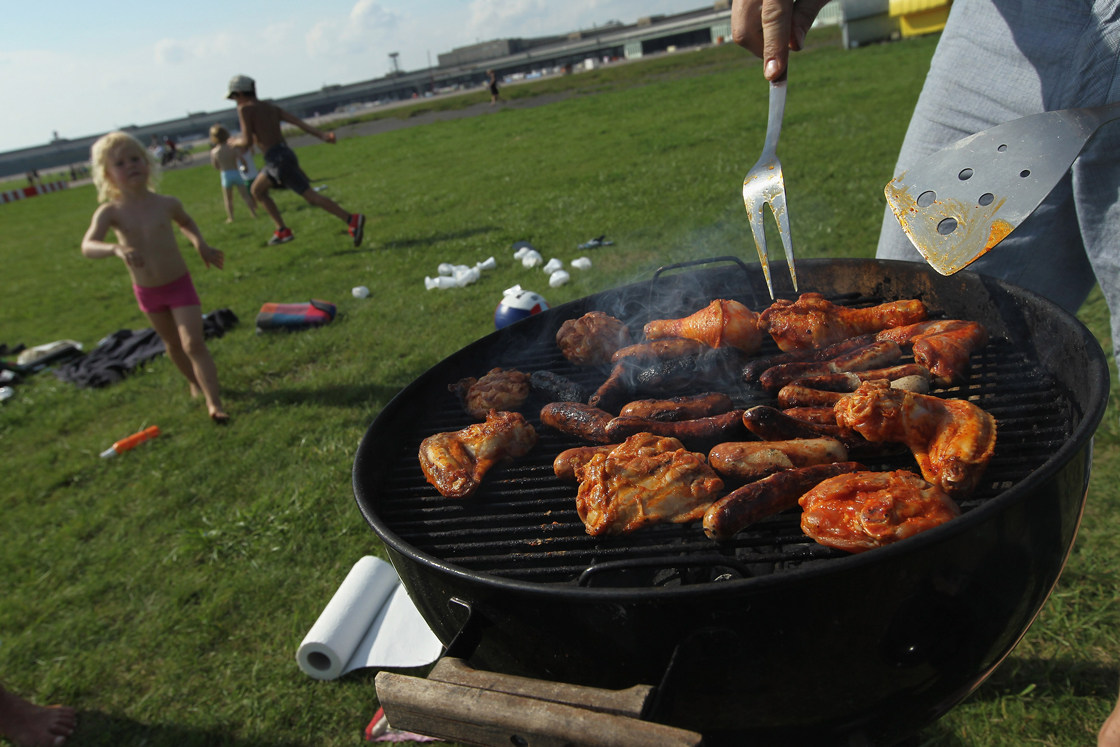TORONTO – Escaping the city for a few days of camping doesn’t have to mean getting away from delicious food, says a chef who takes pleasure in elevating his menu from those old standbys, burgers and hot dogs.

Marcus Monteiro, who grew up camping with his family near Bobcaygeon in the Kawartha Lakes area of Ontario, still enjoys roughing it under canvas. But when it comes to his food, the executive chef at Brassaii Restaurant and Lounge in Toronto prefers to create easy, healthful and tasty alternatives to the packaged and processed fare that many tote along for their outdoor experience.
READ MORE: Simple camping recipes for breakfast tortillas, grilled cheese with bacon, crispy fish and chili
First, do plenty of planning, taking into account food, drinks, cooking implements and ways to keep food fresh.
“Checklists are extremely important, for sure. You want to make sure you bring everything up there because once you’re up and camping it can be very difficult to pick up little odds and ends you forgot,” he said shortly after returning from a weekend of camping in the Muskoka area, a few hours north of Toronto.
“There’s definitely no corner store, maybe asking the neighbour campers around you for stuff, but then that’s 50-50 as well. So lists are very important to make sure you have all your stuff on hand, like a mise en place, all your things prepped, all your items and all the devices you need to actually cook the food. It’s very important.”
Mise en place is a French term that roughly translates as “put in place.” It is a chef’s practice in which food is prepared up to the point that it can used in a dish during cooking.
You’ll need a camp stove or grill, pots, skillets, a cast-iron 30-centimetre (12-inch) Dutch oven and cooking utensils such as spatulas, tongs and wooden spoons. “If it’s more steps involved to the dish you’re going to want to have a bowl. Different sizes are always important,” adds Monteiro, who is also a spokesman for Canadian Tire.
A standard knife, cheese grater, camping dinnerware set and tin foil should also be on the list.
Give your gas stove a trial run before you leave home. “One big thing that I’ve seen a lot of people forget are gas cylinders. … If you’re cooking with gas, make sure you have enough fuel to get you through whatever your culinary needs are during the outing,” he says.
When planning meals, keep in mind that campers need fuel too to maintain energy for such outdoor activities as hiking, canoeing, swimming or cycling.
“Hot dogs and burgers are great, but they’re definitely to the point of being a little too overly done in campsites. And when you get into those realms it’s not really creative any more,” Monteiro says.
But paramount is to keep meals simple without too much prep or too many pans.
If you’re camping near a lake or waterway, you might get lucky and catch dinner.
“One thing that I’m a big advocate of when it comes to food and camping (is) a really nice piece of skinned fish, which can be anywhere from a mackerel or a bass or even perch.”
He swears by salt and pepper for seasoning and citrus, whether a lemon or lime, to “brighten” a dish.
Cheese and eggs are popular ingredients for campers and keep well.
“I’ve worked in England and they actually keep their eggs out of the fridge,” says Monteiro. “Even in the grocery stores the eggs are unrefrigerated. Cheese keeps well. All the vegetables keep well. You don’t have to worry about that kind of stuff. An (omelette) can be adaptable to more than breakfast. I’ve had that for lunch. … For dinner, you can call it a cheese pie.”
For lunch, “grilled cheese is a very simple thing … but it’s one of my favourite things to eat. To me simplicity is beautiful. As long as you have a couple of key components it’s one of those things you can constantly eat and eat and not really get sick of. When it comes to camping, again the bread, the cheese, the butter, the bacon have a very long shelf life.”
But none of those foods will be appreciated if someone ends up ill because the ingredients weren’t stored properly.
Ice packs keep food cool for a day or so but won’t last through a longer outing. Ice is a better choice. Devote one cooler to the ice and try not to open it very often. Have a second cooler for food and replenish the ice in it as needed from the first cooler. A third cooler can be used for drinks. Depending on where you are, the water in streams and lakes can get very cold at night and you can store your drinks there, Monteiro says.
He cites a culinary trick that might sound counterintuitive, but he says it works. Sprinkle the ice in the cooler liberally with salt. “That actually makes the outside melt instantly and then refreeze so actually prolongs the life of ice. I know it sounds like almost the reverse because they use salt to melt ice outside.”
Scientifically, as the melting ice mixes with the salt, the salt-water combination has a lower freezing point than plain water, so the melted ice is actually colder than the original ice. This colder ice-water bath will probably keep food through about three days. Eat the most perishable foods first.
Despite all your plans, Mother Nature might have other ideas.
“One big thing I make sure to tell people is Plan B in regards to rain because that happens whether we like it or not.”


Comments